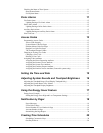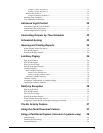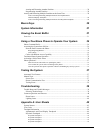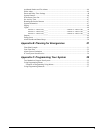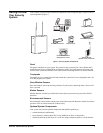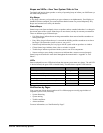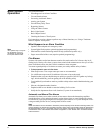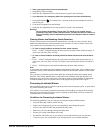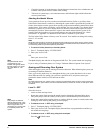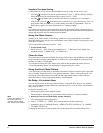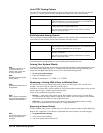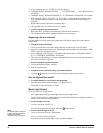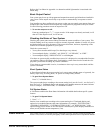
Concord 4 Series Security Systems
4
Basic System
Operations
This section describes:
• What Happens in an Alarm Condition
• Fire and Smoke Alarms
• Preventing Accidental Alarms
• Arming your System
• Exit and Entry Delay Times
• Bypassing Sensors
• Using the Chime Feature
• Basic Light Control
• Basic Output Control
• Checking the Status of Your System
For instructions on using a phone to perform any of these functions, see “Using a Touchtone
Phone to Operate Your System”.
What Happens in an Alarm Condition
• Speakers and touchpads emit emergency tones.
Note
Your system may or may not
be monitored. If it is not
monitored, no central sta-
tion reports will be made.
• System lights flash (requires optional equipment and programming).
• Panel notifies central monitoring station for help (monitored systems only).
• Pagers are notified of the event (requires optional programming).
Fire Alarms
Systems with smoke and/or heat detectors monitor for smoke and/or fire 24 hours a day in all
arming levels. During a fire alarm, system sirens sound a loud constant tone to alert you of a fire
alarm. Individual sensors also have built-in sounders to alert occupants.
You must respond quickly to fire alarms to ensure your safety and the safety of others.
To be prepared in case of a fire alarm:
• Plan escape routes. Two escape routes per room are recommended.
• Use a different escape route if closed doors feel warm or hot to the touch.
• Emphasize that everyone should escape as quickly as possible. DO NOT gather any belong-
ings, which could delay you from getting out of the building safely.
• Crawl and hold your breath as much as possible to help reduce smoke inhalation during your
escape.
• Meet at a designated outdoor location.
• Emphasize that no one should re-enter the building if a fire exists.
• Notify the fire department from a safe location (if system is not monitored).
Automatic and Manual Fire Alarms
Automatic fire alarms occur when a smoke or heat sensor detects the threatening condition
(smoke/heat from a fire) and trips the panel, causing alarm sirens to sound. Manual fire alarms
are initiated by a person pressing the fire emergency panic buttons on a system touchpad or acti-
vating a manual pull fire device, causing alarm sirens to sound.
Note
While most alarms can be canceled or aborted to prevent reporting to the central monitoring station, fire
alarms CANNOT be aborted and are always reported. Since many communities charge for dispatching
the fire department in error, your dealer may give you specific instructions to follow in the event of an
accidental fire alarm. Record these instructions in Appendix A: User Sheets under “Accidental Smoke
and Fire Alarms”.



